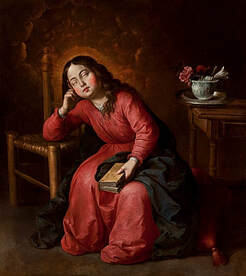
The format of the event was that two speakers from each religion would talk about what we learn of Mary from their tradition and what Mary has meant to them as a woman of faith. Sr Teresa Forcades, described by the BBC as Europe’s most radical nun, gave the more academic contribution. She is very busy, and it has been said that she always seems to be in two places at once. This was borne out by the fact that she spoke to us from a hotel lounge where she was in the middle of a conference that she was organising. It was enlightening. For Teresa Mary is a model of Christian discipleship for both men and women. A surprise to me was the knowledge that in the New Testament Mary speaks more than any other disciple. In fact, suggests Teresa she is the most active and talkative of the disciples, not a traditional view of the Virgin Mary. The first word that Mary speaks in the Gospel of Luke is “how will this be?” in response to the announcement that she has found favour with God and will bear a child. For Sr Teresa this is not a sign of disbelief as happened with Zachariah when he heard that his wife was pregnant but rather showed her as a dialogue partner with God. Throughout the gospels Mary’s words confirm her as a confident woman who takes responsibility for her faith, is a channel of grace, has taken a radical option for life, shouts out with joy, complains and suffers.
Sr Teresa’s contribution was well supported and illustrated by Mary Cullen, well known in Catholic circles in Scotland, in her reflection on the place of Mary in her own life of faith using a picture, a poem, a prayer and a book. Fra Angelica’s painting of the Annunciation was the picture which, for Mary, showed an idealised, submissive and silent Mary, an image that she had grown up with. Experience, however, has taught her that this was the unrealistic, fanciful and even romanticised vision of patriarchy. Throughout her life and through her friendship with other women of faith she came to know Mary as a woman of strength, illustrated well in the poem of Gerard Manley Hopkins “The Blessed Virgin Mary Compared to the Air We Breathe” and the work of Anne Johnson in her book “Myriam of Nazareth, Women of Strength and Wisdom” as well as the work of theologian Elizabeth Johnson who in her book “Truly Our Sister” ‘… invites Mary to come down from the pedestal where she has been honoured for centuries and rejoin us in the community of grace and struggle in history’.
The two Muslim women, Sameia Younes and Israa Safieddine took a different approach, basing their contributions on the text of the Qur’an where Myriam is mentioned 34 times and the only one to be addressed by her personal name, even having a chapter devoted to her and her life. According to the Prophet Mohammed Mary is one of the best women of the world, standing alongside Asiyah, the wife of Pharaoh who rescued Moses from death in the Nile; Khadijah, the wife of the Prophet Muhammad who supported him in his call to be a prophet, and Fatimah, the daughter of Khadijah and the Prophet who was greatly loved by him and seen as an example of an outstanding woman. The details of the life of Mary, particularly the virginal conception and birth of Jesus are very different from that found in the Gospels. Mary, as a young child, lives a life of seclusion and dedication to God, looked after by her uncle Zechariah, when she is visited by an angel who tells her of God’s choice that she should be the mother of the Messiah, Jesus. Jesus is born in the desert where Mary is miraculously sustained by a date tree and spring of water. Afraid of what will be said about her having given birth to a son, “carrying him she brought him to her people. They said, ‘O Mary, you have certainly come up with an odd thing! ….Thereat she pointed to him. They said, ‘How can we speak to one who is yet a baby in the cradle?” But Jesus does speak to confirm that he is of God.
It's easy in a dialogue such as this one to focus on the differences in the accounts but despite these there was a lot in common. In both traditions it was obvious that Mary is seen as an example of a faithful and discerning servant of God for both men and women. She is not mild and meek but strong and courageous and for us engaged in interfaith work she is above all a partner in dialogue.


 RSS Feed
RSS Feed
